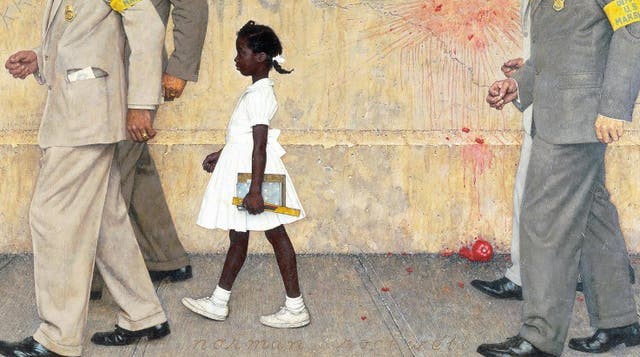APPRAISING THE VALUE OF ART
Appraising art is an unregulated activity. Anyone can go to City Hall, pay $70 for an occupational Licence and Bingo! Voila! You are a fine art appraiser. This is probably why there is so much incompetence among art appraisers. We see so many terrible, horrible, absurd, inept art appraisals. It is clear the people producing them have no training in how to determine value, no experience with the art marketplace, no understanding of the factors that create value in fine art.
Consider the following question. Why are some paintings by the same artist selling for $500,000 and some for 10 millions? Is it because the more expensive ones are bigger? Is it because it didn’t rain that day and more people attended the auction? The correct answer is ARTISTIC MERIT. The market pays more for better art. The market pays a whole lot more for great art. This is where your average appraiser immediately fails. He and she are incapable of discerning, evaluating and pricing artistic merit. They did not graduate with honors from years of college art appreciation courses. There are other factors that increase value enormously.
HISTORICAL SIGNIFICANCE
Is the art of great interest beyond its artistic merit? Consider Norman Rockwell’s 1964 “The Problem We All Live With”

ILLUSTRIOUS OWNERSHIP
Why did the J. F. Kennedy cigar humidor sell for $575,000? Because it used to belong to the most illustrious J.F. Kennedy. The same applies to fine art. Who, used to own the art can enormously increase its value?
RARITY
Rarity is of course an ever-present building block of value. When you consider that we only have 155 paintings by Frida Kahlo every one of them is naturally imbued with significant value by virtue of its paucity.
MARKETS AND VALUE
The value of art is flexible and changes with WHERE its value is being appraised. The very same painting will generally have a significantly higher value in its best market. Consider paintings such as “The Prairie Is My Garden” by Harvey Dunn


In determining their value, a smart appraiser might decide to select South Dakota as the market of reference.
TYPES OF VALUE
When we appraise the value of paintings and drawings for the US Marshals Service, they request the 30 days liquidation value. The values would be higher if they requested the 90 days liquidation value. Usually, more time allows selling for higher prices. When art is destroyed replacing it may require travel, packing, shipping, finder’s fees, to find something similar. For this reason, the Replacement Value is always higher than the Fair Market Value. If, however, you are donating art to the charitable organization of your choice and you are claiming a tax deduction, the IRS requests that the Fair Market Value be used. For these and other reasons, the value of the same artwork depends on the type of valuation that applies to the particular circumstances.
CONDITION
The condition of art and how much it has been restored have an impact on its value. A common misconception however is to imagine that restoring the art will increase its value. Generally, for all good investment-grade fine art, it is preferable to sell it “as-is” “as-found” rather than to have it restored in view of a sale. Museums, art galleries and advanced collectors all have their preferences when it comes to how much restoration, how little restoration, what products and methods to use for restoration, and therefore they much prefer to buy the art unrestored and to fix it to their liking. When appraising art that is in need of restoration a knowledgeable appraiser will figure the value the art after it is restored.
APPRAISAL NEEDS
We appraise the value of fine art for all purposes:
APPRAISAL CLIENTS
- Private owners
- Corporate collections
- Insurance adjusters
- Packing companies
- Art galleries
- Courts
- Collectors
- Insurance agents
- Banks
- Shipping companies
- Art restorers
- Customs services
- Investors
- Insurance companies
- Financial companies
- Movers
- Frame shops
- Law enforcement
- Speculators
- Insurance underwriters
- Mortgage lenders
- Art storage facilities
- Law firms
APPRAISAL TYPES
- Official appraisals- This is needed for insurance companies, the courts, the IRS, obtaining loans All of our official appraisals are fully compliant with the most recent edition of Uniform Standards of Professional Appraisal Practice. We are qualified appraisers as defined by § 170(f)(11) and 6695A of the Internal Revenue Code.
- Running list appraisals
- Walkthroughs- This is done in person, by appointment, on location
- Informal valuations- When you want to price in order to sell. You don’t need an official appraisal but you do need solid and reliable values
- Estimates of value- In general, this is done when it is just for your personal information
- Bulk appraisals- Accumulations of items of the same kind are often best valued with a bulk approach
- Estate appraisals- This is important in situation where fairness is an important consideration
- Collection’s inventory and valuation
WHY US?
We are expert appraisers. We have over 100 years of combined appraisal experience. We have appraised collections comprising 7,000 items. Among our clients are the largest insurance companies, banks, law firms and famous personalities. Appraising your fine art is important. Come to a professional firm. Get it done well, as it should be. To have your work of art appraised, please contact us.
BY EMAIL: INFO@ARTEXPERTSWEBSITE.COM
WE TYPICALLY RESPOND TO INQUIRIES WITHIN 24 HOURS.
Reviews
1,217 global ratings
5 Star
4 Star
3 Star
2 Star
1 Star
Your evaluation is very important to us. Thank you.
